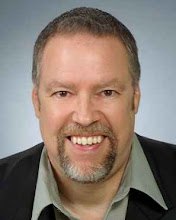The Information: J. Gleick/book review by J. Colannino
Comment: "(This book review first appeared in the pages of "In the Know", A Newsletter of the Knowledge & Information Professional Association, VOLUME 2, ISSUE 6, NOVEMBER, 2011)
What is information? Knowledge theorists such as myself use the "wicked" acronym (actually WKID) to provide a clue: Wisdom > Knowledge > Information > Data. Data are generally defined as "bare facts." By the time we get to information we have a collection of organized data or taxonomy. Knowledge is information employed for a purpose; this is the level of understanding that defines a discipline, e.g., psychology, engineering, etc. Wisdom is knowledge plus some moral or normative component: knowledge will tell you how to make a bomb, wisdom will tell you if you should. It is at the level of wisdom that paradigms and worldviews operate and compete: e.g., environmentalism, theism, materialism, etc. -- all make normative claims regarding to what effect we should employ knowledge. Even so, the WKID categories are to some extent points of convenience along a continuum; the dividing line is often less obvious than advertised.
Into the fray jumps Gleick. Beginning with African drums, moving to Shannon's information theory, and ending at the modern flood of continual information, Gleick attempts to provide perspective on "the information" (an element so foundational to human existence that the author decided to introduce the subject with the definite article). With an interesting prologue and provocative epilogue, the work is organized into 15 chapters and 526 pages, of which nearly 100 comprise end notes and an index. Although the book is not formally divided into parts, it is roughly divided into three sequential themes: forms of communication, Chapters 1 - 5 (a history); the theory of information, Chapters 6 - 9 (a theory); and the sources of information, Chapters 10 - 15 (a flood). The first five chapters survey language in its various forms, first oral then written; I found them riveting. The next four chapters begin the dive into formal communication theory. They reveal the remarkable result that digital codes (as opposed to analog transmissions) can be made arbitrarily accurate even over noisy channels. In fact, the most accurate, condensed, and efficient digital code known to man happens to be the genetic code -- so, information is foundational to humanness in more ways than one -- and it gets its own chapter (10).
If the book had ended with Chapter 10, it would have remained a very good book, if not incomplete. But the author earns extra points for soldiering on. Because in fact, Chapter 10 sets up an implicit tension: what has generated all that information? At the time of the mid-nineteenth century, the answer was well known: all known information sources were sentient. Had DNA's digital code been discovered then, rather than 100 years later, the verdict would have likely remained unanimous, and the question would not have been "What..." but "Who..." with God declared Author; Shannon's information theoretic would have only cemented the view: the unparalleled informational carrying capacity of DNA, its digital nature in a pre-digital world, its remarkable error correction routines...
But that is not how history went, and it is not what Gleick believes, nor how he chose to end his book. He does not shy away from attempting to answer the questions his subject demands. Four chapters are devoted to memes, randomness, quantum mechanics, and other non-sentient explanations for the origin of biological information. (This is something I have studied at some length. I generally find non-sentient explanations of biological information incoherent, and I say that is the case here; I am apparently a century out of time.) Notwithstanding, the writing is very good, and in places, spellbinding. His investigation is fearless and authentic. Gleick is committed to follow his subject to its end, and I cannot help but to recommend this book."


0 Comments:
Post a Comment
<< Home